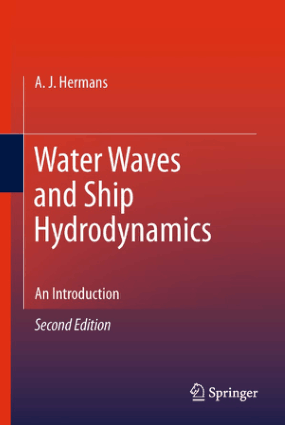PREFACE
For a structure as large and as complex as a ship
there are three levels of structural design, the second
and most central of which is the subject of this
book. Concept design deals with the topology or
overall ge ometry of the structure; preliminary design
establishes the scantlings (structural dimensions) of
all principal structural members; and detail design
is concerned with local aspects such as joints,
openings, and rein forcements. Overall structural
geometry is generally determined by overall design
requirements rather than by structural requirements,
while detail design is largely guided and constrained
by fabrication methods and requirements. Also, since
local structural details are numerous and basically
similar among various structures they lend themselves
to standardization and to design from handbooks and
structural codes. Thus, it is in preliminary design
where the structural designer has the largest number
of signifi cant decisions and options, and the greatest
scope for optimizing the structure so that it best
fulfi lls the objectives and satis fi es all of the various
constraints and requirements.
Rationally-based design is design from fi rst principles
using the tools of modern engineering science:
computers and the methods of structural analysis and
optimization which computers have made possible.
Thus, the rationally-based approach is ideally suited
for preliminary structural design, and it is this ap proach
and this level of design that is the subject of this book.
As shown by some examples in Section 1.3, this type
of design offers substantial benefi ts to all parties
concerned: owner, designer, builder, and operator.
Designing from fi rst principles requires two separate
and very extensive analyses: a response analysis to
ascertain the true and complete response of the structure
to all loads and load combinations, and a limit
state analysis to ascertain all of the possible limit or
failure values of these responses. Taken together these
two analyses are by far the dominant part of rationallybased
design, and this is refl ected in this text in which
15 of the 17 chapters are devoted to various aspects of
analysis. Because of this predominance of analysis,
rationally-based design is necessarily computer based
and this is the key to many of its benefi ts: speed,
accuracy, thoroughness, economy, easy modifi cation,
and so forth. Also, as explained in Section 1.3, the
necessary computer programs are already available and
the hardware and software costs are quite mod erate.
Of the many different topics and aspects in preliminary
structural design some are an inherent part of
rationally-based design (e.g., the aspects pertaining to
response analysis and limit analysis) while others are
more distinct and external (e.g., the selection of materials)
or are simply constraints in the optimization process
(e.g., the avoidance of some natural frequency).
One of the advantages of the rationally-based approach
is that it unifi es and coordinates these many different
aspects. Even for the more distinct or external aspects
the rationally-based approach provides a framework
by which each can be better coordinated with the other
aspects.
PREREQUISITES, LEVELS OF STUDY, AND
TIME REQUIREMENTS
The material in this book is suitable for either graduate
or undergraduate study, or a combination of both. The
methods and practices presented in this book will
also be useful for practicing engineers and engineersin-
training. The only prerequisites are knowledge of
mechanics of sol ids, strength of materials, and the
basic aspects of matrix algebra and of statistics. If
necessary, the latter two could be covered in a few
introductory classes or in outside reading. The total
time required to cover all of the topics in this book is
about nine semester hours.
Contents
1. Rationally-Based Structural Design, 1-1
2. Loads, Structural Response, Limit States, and
Optimization, 2-1
3. Hull Girder Response Analysis—Prismatic
Beam, 3-1
4. Wave Loads—Statistical, Dynamic, and
Nonlinear Aspects, 4-1
5. Reliability-Based Structural Design, 5-1
6. Frame Analysis, 6-1
7. Basic Aspects of the Finite Element Method, 7-1
8. Nonlinear Finite Element Analysis, 8-1
9. Plate Bending, 9-1
10. Deformation and Strength Criteria for
Stiffened Panels Under Impact Pressure, 10-1
11. Buckling and Ultimate Strength
of Columns, 11-1
12. Elastic Buckling of Plates, 12-1
13. Large Defl ection Behavior and Ultimate
Strength of Plates, 13-1
14. Elastic Buckling of Stiffened Panels, 14-1
15. Large Defl ection Behavior and Ultimate
Strength of Stiffened Panels, 15-1
16. Ultimate Strength of Ship Hulls, 16-1
17. Fatigue of Ship Structural Details, 17-1
Index, I-1



